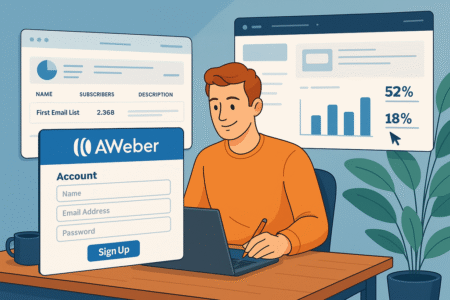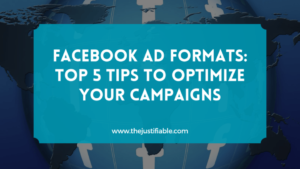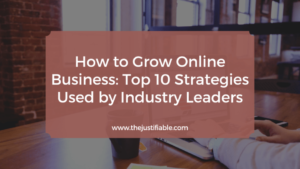Table of Contents
In today’s digital marketing landscape, the prowess of HTML email builders has become an indispensable tool for crafting visually stunning email campaigns. When it comes to engaging your audience, the first impression is everything, and that’s precisely where HTML email builders shine. These tools are not just about creating emails; they are about creating experiences.
Imagine opening an email that’s not just a block of text but a visually appealing, interactive experience that resonates with your personal tastes and preferences. That’s the magic HTML email builders bring to the table. They enable marketers and designers to push the boundaries of creativity and efficiency, transforming the humble email into a powerful marketing asset.
Furthermore, with the evolution of digital marketing, emails have become more than just a communication tool; they are a brand statement. The design and layout of your emails reflect your brand’s identity and values. HTML email builders empower you to maintain brand consistency across all your email campaigns, ensuring that every communication with your audience strengthens your brand image.
In the following sections, we’ll delve into the top strategies for leveraging HTML email builders to create email designs that are not just beautiful but also effective in driving your marketing goals.
Strategy #1: Leveraging Responsive Design with HTML Email Builders
HTML email builders have revolutionized the way we approach email marketing, particularly through the lens of responsive design. In this fast-paced digital era, where your audience is constantly on the move, responsive design isn’t just a feature—it’s a necessity. Let’s dive into why responsive design is pivotal in email marketing and how HTML email builders are your best ally in this journey.
Understanding the significance of responsive design in email marketing begins with recognizing the diverse range of devices your audience uses to access their emails. From smartphones to tablets, each device has a different screen size and resolution. Responsive design ensures that your email looks impeccable and functions flawlessly across all these devices. It’s about giving your audience a seamless experience, whether they’re reading your email on a busy train via their phone or on a lazy Sunday afternoon on their tablet.
But why is this so crucial? Well, consider this: a staggering number of people check their emails on mobile devices. If your email doesn’t render well on these devices, you risk losing engagement, and worse, damaging your brand’s perception. Responsive design is not just about aesthetics; it’s about user experience. It’s about ensuring that every button is clickable, every image is visible, and every word is readable, no matter the device.
This is where HTML email builders come into play. These builders are designed with responsiveness at their core. They offer a range of templates and tools that automatically adjust your email’s layout, images, and content to fit any screen size. This means you don’t need to be a coding wizard to create emails that look professionally designed. With drag-and-drop features, customizable templates, and real-time previews, HTML email builders empower you to craft emails that are not only visually appealing but are also optimized for every device.
Moreover, these builders provide valuable insights and analytics on how your emails perform across different devices. This data is gold dust. It allows you to understand your audience better and continually refine your email designs for optimal performance.
Strategy #2: Utilizing Pre-Designed Templates for Quick Turnarounds
In the realm of email marketing, the use of pre-designed templates in HTML email builders is a game-changer, especially when it comes to achieving quick turnarounds without sacrificing quality. Let’s explore the multifaceted benefits of these templates and delve into practical tips for tailoring them to embody your unique brand identity.
The primary advantage of using pre-designed templates is their ability to significantly expedite the email creation process. In the fast-paced marketing world, time is a commodity, and these templates are like a shortcut to a destination without missing out on the scenic beauty. They offer a solid foundation, a starting point, from which you can build and customize.
What makes these templates so valuable? For starters, they are crafted by design professionals, ensuring that each template adheres to the best practices of email design and user experience. This professional touch gives your emails a polished and sophisticated look, one that resonates with quality and trustworthiness in the eyes of your audience.
But how do you make a pre-designed template feel like it’s uniquely yours? Customization is key. While templates provide the structure, the art of customization breathes life into them, aligning them with your brand’s voice and visual identity. Here are some tips to effectively customize templates:
- Brand Alignment: Start by infusing your brand’s color scheme, logos, and fonts into the template. This immediate visual connection to your brand is crucial for building recognition and trust.
- Content Personalization: Tailor the content to speak directly to your audience. Use language and tone that reflect your brand’s personality. Remember, the template is a vessel for your message; fill it with words that engage and resonate.
- Imagery: Replace generic images with your own high-quality, brand-specific visuals. Images are powerful storytellers; ensure they align with your brand narrative.
- Call-to-Action (CTA) Buttons: Customize the CTA buttons not just in text, but also in style and placement. Your CTA is where the action happens; make it stand out and make it ‘you’.
- Mobile Optimization: Even though most templates are responsive, always check and tweak the design for mobile devices. Your emails should look impeccable on any screen.
- Consistency: Ensure that every email you send out, regardless of the template used, maintains a consistent look and feel. Consistency breeds familiarity, and familiarity breeds trust.
Strategy #3: Enhancing Emails with Interactive Elements
When it comes to elevating the standard of your email campaigns, incorporating interactive elements is a strategy that can truly set you apart. HTML email builders are pivotal in this transformation, allowing you to introduce dynamic, engaging content that captivates your audience. Let’s delve into the world of interactive elements in emails and discover how they can enrich the user experience and elevate your brand.
Interactive elements in emails are more than just a novelty; they are a conduit for deeper engagement. By transforming passive readers into active participants, these elements can significantly increase the time spent on your emails, fostering a stronger connection with your content. But what exactly constitutes interactive elements? We’re talking about features like image carousels, hover effects, animated buttons, and even embedded videos. These elements invite action and participation, making the email experience more engaging and memorable.
The power of interactive emails lies in their ability to tell a story in a way that static emails simply cannot. Imagine showcasing your product through an image carousel, allowing the reader to swipe through different views. Or consider the impact of an animated button that changes color or expands when hovered over, enticing the reader to click. These subtle yet powerful interactions not only enhance the aesthetic appeal but also make the message more compelling.
Now, how do HTML email builders facilitate the creation of these interactive elements? The beauty of these builders lies in their user-friendly interfaces. They offer a range of tools and widgets that let you seamlessly integrate interactive features into your emails without requiring extensive coding knowledge. With drag-and-drop ease, you can embed videos, create animated CTAs, and even design quizzes or surveys directly within the email.
However, it’s important to strike the right balance. Overloading an email with too many interactive elements can be overwhelming and might detract from the primary message. The key is to use them judiciously, ensuring that each interactive feature serves a purpose and enhances the overall narrative of your email.
Moreover, it’s crucial to keep in mind the compatibility of these interactive elements across different email clients and devices. While most modern email clients support interactive features, some, especially older versions, might not. HTML email builders usually provide compatibility checks and fallback options to ensure that your email maintains its effectiveness even if some interactive elements don’t render as intended.
Strategy #4: Optimizing Images for Faster Loading and Better Performance
In the visually driven world of email marketing, images play a pivotal role, but their power is fully harnessed only when they are optimized for faster loading and better performance. Here’s where HTML email builders come into play, offering essential tools to ensure your images are not just eye-catching but also effectively optimized. Let’s explore the art of image optimization and its critical impact on your email campaigns.
The cornerstone of using images in emails is understanding that while they can enhance engagement, they can also be a double-edged sword. Large, unoptimized images can lead to slower loading times, negatively impacting user experience and even your email’s deliverability. This is particularly crucial in an era where a significant portion of emails are accessed on mobile devices with varying internet speeds.
So, how do we strike the perfect balance between high-quality visuals and optimal performance? The first step is choosing the right format. JPEGs are ideal for photographs and images with gradients, while PNGs are better for images with text, logos, or transparent backgrounds. HTML email builders often provide the functionality to help you choose the optimal format for your images.
Next, let’s talk about resizing and compression. Resizing your images to fit the width of your email template is a must. There’s no need for an image to be larger than what’s displayed, as it only contributes to unnecessary file size. Compression, on the other hand, reduces the file size without noticeably affecting the visual quality. Tools within HTML email builders often allow for automatic resizing and compression, making this task hassle-free.
Another often-overlooked aspect is the use of alt-text for images. Not only is this crucial for accessibility, ensuring that your content is inclusive for all readers, but it also provides a textual context that can be displayed in case the image doesn’t load. This way, your message gets conveyed, regardless of whether the image is rendered or not.
It’s also worth noting the role of image optimization in SEO within emails. While emails themselves aren’t directly ranked by search engines, optimized images can lead to faster loading times, which translates to better user engagement and potentially higher click-through rates to your website. This indirect impact can contribute to the overall SEO performance of your digital presence.
Strategy #5: Incorporating Personalization and Dynamic Content
Diving into Strategy #5, we explore the transformative power of personalization and dynamic content in email marketing, a realm where HTML email builders are not just tools but catalysts for connection. In an age where consumers are bombarded with generic messages, personalization stands out as a beacon of relevance and engagement.
Personalization in email marketing goes beyond just addressing a recipient by their name. It’s about tailoring the content to meet the unique interests, preferences, and behaviors of each individual. This approach shifts the focus from a one-size-fits-all message to a more targeted, relevant communication, making each recipient feel seen and valued.
But how do we achieve this level of personalization? It starts with data. By leveraging data on user behavior, purchase history, and engagement patterns, you can create segments within your audience. These segments allow you to tailor your content in a way that resonates with each group. For instance, sending a special offer on products that a customer has previously shown interest in can significantly boost engagement and conversion rates.
Dynamic content takes personalization a step further. It refers to the ability of HTML email builders to display different content to different recipients based on predefined criteria. This could be as simple as showing different images based on location or as complex as customizing entire sections of the email based on user behavior. The beauty of dynamic content is that it creates a highly personalized experience without the need for multiple versions of the same email.
One critical aspect to consider is the balance between personalization and privacy. While personalization can greatly enhance the user experience, it’s vital to respect user privacy and adhere to data protection regulations. Transparency about data usage and providing options for users to control their data preferences are key practices in maintaining this balance.
Moreover, personalization and dynamic content are not just beneficial for the user; they also provide valuable insights for marketers. By analyzing the performance of different segments and dynamic content variations, you can gain deeper insights into what resonates with your audience. This continuous learning process enables you to refine your strategies, leading to more effective and successful email campaigns.
Strategy #6: A/B Testing Designs for Maximum Impact
Embarking on Strategy #6, we delve into the critical practice of A/B testing designs in email marketing, a technique that significantly amplifies the effectiveness of your campaigns. This strategy, powerfully executed through HTML email builders, is not just about making choices; it’s about making informed decisions based on real data. A/B testing, or split testing, is the key to understanding what truly resonates with your audience.
A/B testing in the context of email marketing involves creating two versions of an email — let’s call them A and B. These versions are identical in most respects, except for one variable that you want to test. This variable could be anything from the subject line, the layout of the email, the images used, or even the call-to-action button. By sending these variations to a small segment of your audience and analyzing the results, you can gain valuable insights into what works best.
But why is A/B testing so crucial? The answer lies in its ability to remove guesswork from your email strategy. Instead of relying on assumptions about what your audience might like, A/B testing provides concrete data on what actually drives engagement and conversions. This method allows you to continually refine and optimize your emails, ensuring that each element is fine-tuned for maximum impact.
HTML email builders are invaluable in this process. They offer the flexibility to easily create multiple versions of an email and the tools to track and compare the performance of each version. With these builders, you can swiftly implement changes based on your testing results, allowing for a dynamic and responsive approach to email design.
When conducting A/B tests, it’s essential to keep a few things in mind:
Test One Variable at a Time: To get clear, actionable results, change only one element between versions. If you change multiple elements, it becomes difficult to pinpoint which one made the difference.
Choose a Significant Sample Size: Ensure that your test group is large enough to provide statistically significant results. The larger the sample, the more reliable the data.
Be Patient: Give your test enough time to produce results. Rushing the process can lead to incomplete data and misleading conclusions.
Apply Learnings: The real value of A/B testing lies in applying what you’ve learned to future campaigns. It’s an ongoing process of refinement and improvement.
A/B testing is more than just a strategy; it’s a mindset. It’s about being open to learning, experimenting, and evolving based on what your audience is telling you, not through their words, but through their actions. By embracing A/B testing, you empower your email marketing campaigns to achieve their maximum potential, ensuring that every email you send is not just good, but great.
Strategy #7: Ensuring Accessibility and Compliance
As we explore Strategy #7, the focus shifts to a crucial aspect often overlooked in email marketing: ensuring accessibility and compliance. This strategy is not just about meeting legal requirements; it’s about embracing inclusivity and ensuring that your email campaigns are accessible to everyone, including people with disabilities. HTML email builders play a significant role in this, offering tools and features that make compliance and accessibility achievable goals.
Accessibility in email design refers to creating emails that can be easily read and understood by all users, including those with disabilities. This includes people who use screen readers, have visual impairments, or face other challenges that might make navigating typical emails difficult. By focusing on accessibility, you’re not just expanding your audience reach; you’re also showing empathy and consideration for all segments of your audience.
So, how do we ensure emails are accessible? Firstly, it involves using a logical structure for your content. HTML email builders allow you to define headings and subheadings properly, making it easier for screen readers to navigate the content. Additionally, using alt text for images is a must. This ensures that if the images don’t load or if someone is using a screen reader, they still understand the context of the image.
Another aspect is color contrast and font size. High contrast between text and background and a readable font size ensure that your content is legible for everyone, including those with visual impairments. HTML email builders often provide guidelines and tools to check and adjust these elements effectively.
Compliance is equally important, especially considering regulations like the Americans with Disabilities Act (ADA) and the General Data Protection Regulation (GDPR). Ensuring your emails comply with these regulations not only avoids potential legal issues but also builds trust with your audience. It shows that you’re a responsible brand that values user privacy and inclusivity.
HTML email builders come equipped with features that help in maintaining compliance. For GDPR, for instance, they ensure that the data collection methods, like subscription forms, are transparent and provide the necessary options for user consent. They also offer easy ways to manage and update mailing lists, ensuring you’re only sending emails to those who have opted in.
Elevating Your Email Campaigns with HTML Email Builders
As we reach the culmination of our exploration into the dynamic world of HTML email builders and their transformative impact on email marketing, it’s evident that these tools are not just a convenience; they are a necessity for modern marketers. HTML email builders are the architects behind the scenes, turning your creative visions into tangible, impactful email campaigns.
The journey through various strategies, from leveraging responsive design to ensuring accessibility and compliance, underscores the versatility and power of HTML email builders. These tools have redefined the boundaries of email marketing, offering a blend of creativity, efficiency, and effectiveness. The ability to create visually stunning, highly personalized, and interactive emails is no longer a luxury; it’s a requirement in the ever-competitive landscape of digital marketing.
But why are HTML email builders so crucial in elevating your email campaigns? The answer lies in their ability to seamlessly integrate various elements of effective email marketing. Whether it’s optimizing images for better performance, incorporating A/B testing for enhanced engagement, or ensuring your emails are accessible to all, these builders provide a comprehensive toolkit that caters to every aspect of a successful email campaign.
Moreover, the importance of HTML email builders extends beyond just the aesthetic and functional enhancements of your emails. They play a pivotal role in streamlining your workflow, offering time-saving templates and automation features that free up your time to focus on strategy and content creation. They are not just tools for building emails; they are partners in your marketing journey.
In an era where email marketing continues to be a vital component of digital marketing strategies, the role of HTML email builders is more significant than ever. They empower marketers to not just communicate but connect with their audience, creating emails that are not just read but experienced.
As we wrap up this insightful journey, remember that the essence of successful email marketing lies in understanding and leveraging the strengths of HTML email builders. It’s about crafting emails that captivate, engage, and convert. With these powerful tools at your disposal, you’re well-equipped to take your email campaigns to new heights, transcending the ordinary and achieving the extraordinary.








